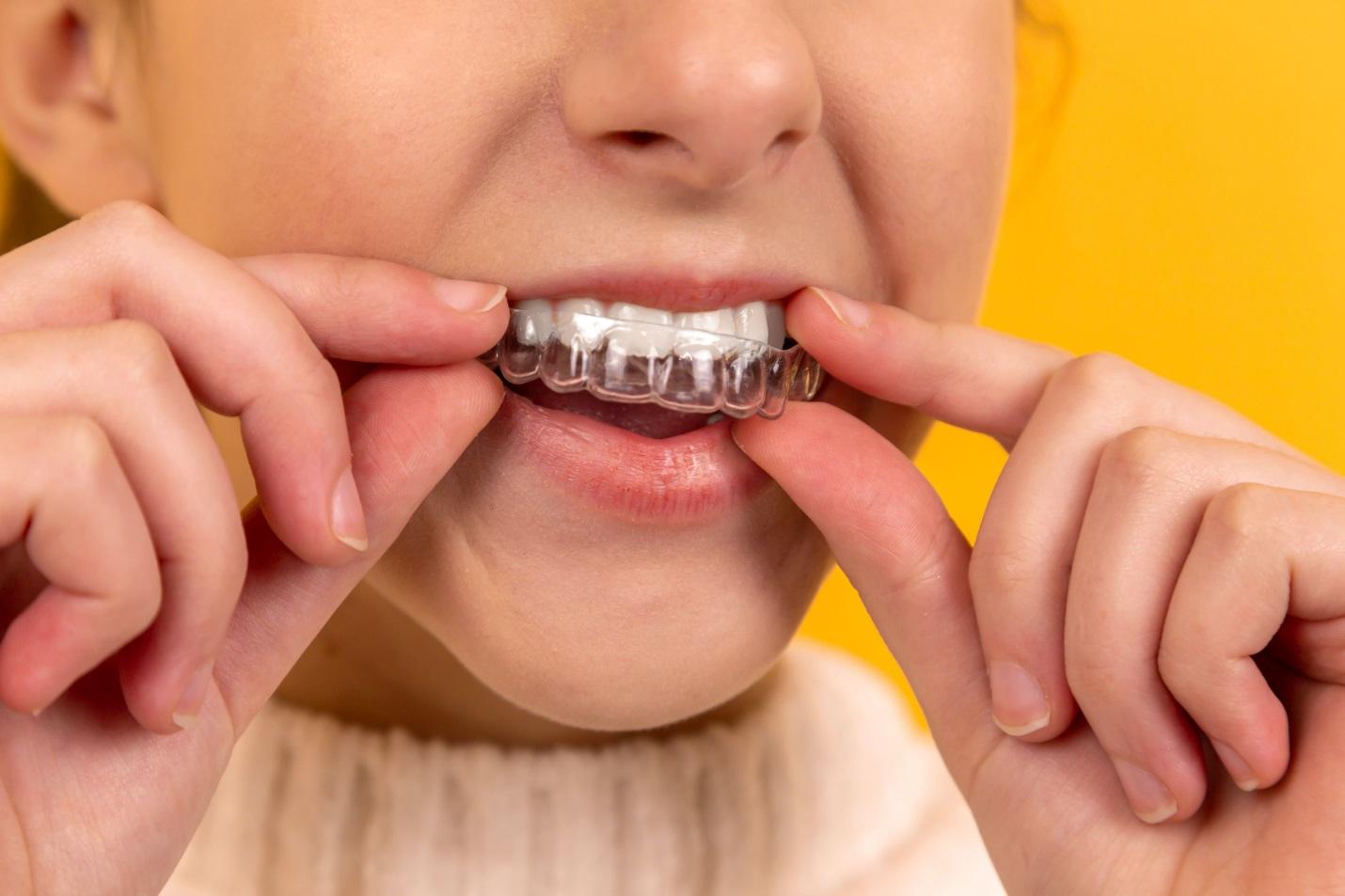So, you’ve made the decision that you want straighter teeth and a smile you can feel confident in. Excellent, what’s next? There are two options available for orthodontic procedures and crooked smile correction: traditional dental braces and Invisalign. But how do you decide what option is right for you, and who comes out on top in the matchup of Invisalign versus braces?
To help you answer these questions, let’s dive into both dental braces and Invisalign, the pros and cons of both treatments, what they can do for your teeth, and what their limitations are.
Dental braces — are they just for kids?
You might look at dental braces and immediately think of your high school years. Still, orthodontic technology has made a lot of advancements in recent years, creating a less obtrusive and more subtle type of braces than the traditional styles you might remember from childhood.
In particular, the development of ceramic brackets that match the colour of your teeth has had a dramatic impact on the look of braces, making them a much more subtle form of teeth correction than they once were.
Why dental braces could be right for you
One of the reasons braces are so effective on younger people is not necessarily because of their age but because dental braces are permanently affixed to the teeth throughout treatment. They can’t be removed, so there’s no risk of forgetting to wear them or skipping a day here and there which might reduce the effectiveness of the treatment.
In the Invisalign versus braces matchup, braces also score points for dramatic re-correction. They’re designed to be much more effective at correcting excessive overcrowding, large gaps, misaligned bites and crooked teeth. If major corrections are required, braces will always be the preferred treatment for the best results.
The downsides of dental braces
There’s no escaping the fact that braces are visible, and you can’t remove them during treatment. This can put some restrictions on your diet (no biting straight into carrots or apples, please) and can also be awkward when brushing and flossing teeth. Because they’re so effectively used on adolescents, some people find the association with looking like a high schooler and wearing braces to be a downside.
How does Invisalign work?
Invisalign corrects your smile through a system of personalised trays called aligners. These are made of clear plastic and worn over your teeth like a retainer to reposition your smile. The beauty of the Invisalign system is that it takes a 3D scan of your mouth to create a completely unique treatment and a comfortably fitted aligner that is minimally disruptive.
For extra security and to provide more effective results, SmartForce blocks — which are the same colour as your teeth — are attached to specific points in your smile, acting as an anchor for the aligner tray.
Why Invisalign might be the right choice for you
Because the aligner trays are made of completely clear plastic, their appearance is very discreet and subtle. Therefore, the design is ideal for professionals and won’t distract during work presentations, client meetings, or be visible in photos.
Being completely removable, the aligners can be taken off during meals, and you can still brush and floss your teeth as normal throughout your treatment. Invisalign will cause minimal disruption to your life and will barely be noticeable when you’re out and about in public.
The limitations of Invisalign
While the removable tray design is a handy feature, it can also provide a temptation to remove the aligners more than you should. Invisalign trays need to be worn for 22 hours every day to be effective. Skimping on your wearing time can result in the treatment being less effective and take a longer time.
Invisalign also has less power to treat severe misalignment than braces. Depending on the severity of your dental issues, Invisalign may not correct the issue, and dental braces will be required. If you do opt for Invisalign, bear in mind that you’ll need to attend regular dentist appointments — aligner trays are generally worn for a week and then swapped out for the next phase.
How much are braces versus Invisalign?
Depending on several factors, including material, time-worn, and the amount of adjustment required, the cost of dental braces can fluctuate quite a lot. Likewise, Invisalign price packages range from Express to Light, Moderate and Comprehensive, with different prices based on how much correction you require and the time treatment will take.
At Sydney Road Dental Care, we work with our patients to offer several payment options, including instalment plans to help them access the dental services they need.
So, how do I decide between Invisalign versus braces?
When you visit Sydney Road Dental Care as a new patient, we’ll organise a consultation to discuss your dental issues, the overall state of your teeth, and your desired results. As experts on general and cosmetic dentistry, our friendly team is well-positioned to help you choose the best solution for your overall dental health while also considering aesthetics.
If you’d like to find out more about us or discuss whether dental braces or Invisalign are right for you, we’d love to hear from you! There’s no time like the present, so contact us today and start a conversation about transforming your smile.

